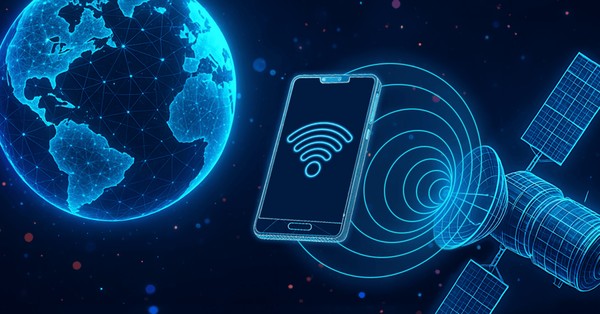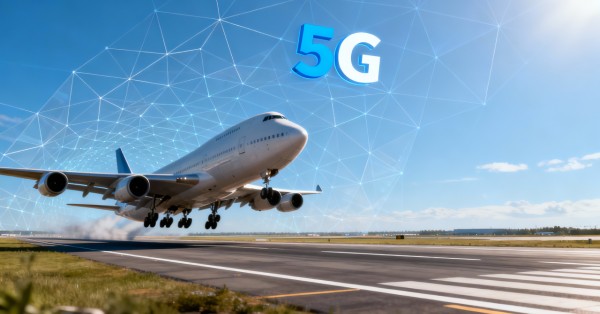AT&T Users on T-Mobile Satellite: Data Signals Cross-Carrier D2D Demand
New usage data shows AT&T subscribers are tapping into T-Mobile’s Starlink-powered T-Satellite more than expected, signaling a rapid shift in how carriers and customers think about direct-to-device connectivity.
Early Adoption: Cross-Carrier Demand for D2D/NTN
Speedtest intelligence indicates T-Mobile users account for the majority of direct-to-device (D2D) connections to Starlink, roughly six in ten overall and more than seven in ten among devices reporting active service at connection time. The surprise is AT&T’s footprint: about a third of observed connections come from AT&T subscribers, while Verizon’s share is minimal. Several factors explain the split. T-Mobile bundles T-Satellite at no extra cost on its premium Experience Beyond plan and allows non-T-Mobile users to join for $10 per month via eSIM, making access easy. By contrast, Verizon has been steering customers toward its Skylo-enabled path. And AT&T customers appear comfortable trialing T-Satellite while AST SpaceMobile’s service ramps.
Usage Hotspots: Remote Terrain, Parks, and Incident Zones
Geographic patterns are consistent with an off-grid safety and recreation use case. Los Angeles County, home to the Angeles National Forest and this year’s wildfire response, tops all counties for D2D activity. Other hotspots include Larimer County, CO (Rocky Mountain National Park), Teton County, WY (Grand Teton and Yellowstone), Mohave County, AZ (Grand Canyon, Lake Mead), and Mineral County, MT. These are places with real dead zones, where D2D changes the calculus from “no service” to “good enough for messaging and essential apps.”
Reality Check: Low Usage Share, High Backup Value
Americans are off terrestrial cellular networks only a few percent of the time, yet that sliver often coincides with the moments when backup connectivity matters most. Surveys show a majority of users are willing to pay a modest monthly fee for satellite fallback, unlocking billions in potential industry revenue. That willingness underpins why multiple players—SpaceX/Starlink, Globalstar, AST SpaceMobile, Lynk, Iridium, and aggregators like Skylo—are accelerating plans.
D2D Competitive Landscape: Models, Partnerships, Timelines
D2D has moved from demos to commercialization, with carriers taking different routes to market and spectrum.
T-Mobile + SpaceX: BYO Phone, Simple eSIM Onboarding
T-Mobile announced its SpaceX partnership in 2022, ran a large beta in early 2025, and commercially launched T-Satellite messaging in July 2025. Today it runs over hundreds of Starlink “Direct to Cell” satellites, supports most mainstream smartphones from the past few years without new hardware, and includes access for premium plan subscribers at no extra charge. Others can add the service for $10 per month, including non-T-Mobile users via eSIM. Early data access is live for whitelisted apps like Google Maps, Messages, WhatsApp, select navigation and outdoor tools, and Apple’s core apps. Expectations are set appropriately: this is not 5G; it is utility-grade coverage where towers do not exist.
Verizon + Skylo: Aggregated Capacity, Gated Devices
Verizon introduced satellite messaging via Skylo in early 2025, initially for emergency use on select Samsung devices, expanding later to newer Pixels and broader scenarios. Skylo aggregates capacity from multiple satellite operators, including Viasat, Ligado, TerreStar, and EchoStar. This pathway helps explain Verizon’s lighter presence on Starlink-based D2D metrics.
AT&T + AST SpaceMobile: Intermittent Today, Denser 2026
AT&T’s strategy hinges on AST SpaceMobile, which plans intermittent service this year and aims for more continuous coverage in 2026 as its constellation grows. AT&T customers appear to be bridging the gap by using T-Satellite in the interim, a practical signal that customers prioritize coverage continuity over brand boundaries when off-grid.
Apple + Globalstar: Hardware-Led D2D, Large Installed Base
Apple mainstreamed consumer satellite messaging through Globalstar, starting with iPhone 14 and expanding to wearables. This is a hardware-led approach, whereas T-Mobile’s model favors software and spectrum integration so existing phones can connect.
NTN Network Implications: Capacity, Spectrum, 3GPP Standards
Scaling D2D hinges on purpose-built satellites, licensed spectrum, and 3GPP NTN alignment without degrading fixed satellite broadband.
Capacity Segmentation Keeps Fixed Satellite Broadband Stable
Starlink operates separate spacecraft for fixed broadband and D2D, sharing backhaul but isolating user-plane load. U.S. fixed service performance metrics have held steady during T-Satellite testing and launch, an important signal as Starlink executes government-funded rural broadband commitments. The delineation reduces cannibalization risk while allowing each service to scale on its own trajectory.
Path to LTE-Like Speeds: More Spectrum and Satellites
Starlink’s roadmap targets data rates in the 4G LTE range over time. To get there, SpaceX has pursued additional licensed spectrum, including a major deal with EchoStar, and requested authorization for a much larger D2D fleet. Near term, T-Satellite data remains app-gated and latency-variable as satellites pass overhead. The next unlocks depend on handset vendor support for new bands, radio firmware, and 3GPP NTN features maturing in Releases 17 and 18.
Global Footprint and Wholesale: Policy and Roaming Hurdles
When outside the U.S., Starlink’s D2D payloads serve carrier partners such as Rogers, Optus, Telstra, KDDI, Entel, and Kyivstar. Some operators are expanding licensed spectrum allocations to boost throughput, signaling confidence in wholesale D2D. Cross-border spectrum coordination, emergency calling, lawful intercept, and roaming policies remain execution risks that will require tight carrier-satellite alignment.
Actions for Telecom Leaders: Product, Policy, and Readiness
Operators and enterprises can convert D2D from a novelty into a reliability layer with clear offers, device readiness, and policies.
Mobile Operators: Bundle, Churn Defense, Scalable Onboarding
Bundle satellite fallback in premium plans, with transparent app and usage policies. Streamline eSIM onboarding for rivals’ customers to capture roaming-like revenue. Negotiate wholesale terms that preserve margin while ensuring device OEMs enable the right bands. Prioritize first-responder and disaster recovery integrations, especially for FirstNet-like mandates. Use D2D as a rural and outdoor differentiation lever to counter churn.
Enterprises/Public Sector: Design for Graceful Degradation
Utilities, transportation, oil and gas, and field services should implement policy-based failover to D2D for messaging, navigation, and telemetry. Update procurement to require NTN-capable devices, MDM controls for satellite use, and clear cost caps. For public safety and emergency management, integrate D2D into incident communications and situational awareness playbooks.
Vendors and OEMs: Accelerate NTN Band and Device Readiness
Silicon and device makers should prioritize NTN band support, RF coexistence, power efficiency, and UI cues for off-grid modes. App providers should optimize for intermittent links and offline-first behavior. Security vendors must extend threat and compliance controls into satellite access paths.
Key D2D/NTN Metrics to Track in the Next 12 Months
Adoption and economics will hinge on a few operational signals.
Activation Mix and ARPU Uplift from Satellite Fallback
Track the split between bundled versus add-on subscriptions across carriers, cross-carrier eSIM activations, and incremental ARPU. Watch AT&T’s mix shift as AST SpaceMobile scales.
Satellite Density and Spectrum Depth for D2D
Monitor D2D satellite counts, spectrum acquisitions and refarming, and handset band enablement. These will determine whether data expands from app-gated to general-purpose.
Service Quality KPIs and App Ecosystem Growth
Keep an eye on median availability, latency, and throughput during peak outdoor seasons, plus the growth of supported apps. Enterprise-grade SLAs will follow only if consistency improves.
Bottom line: AT&T customers using T-Mobile’s T-Satellite is a leading indicator that D2D is becoming a universal reliability layer, not a single-carrier perk—creating both a defensive necessity and a new revenue lane for the industry.








































